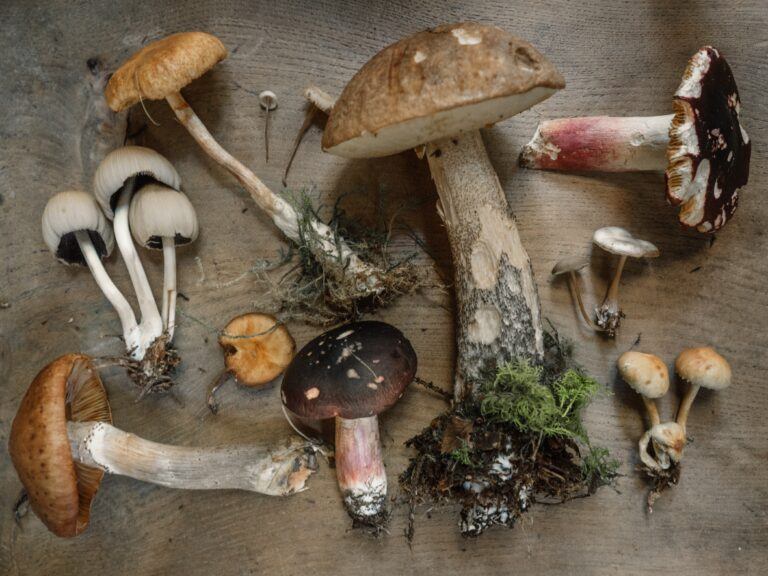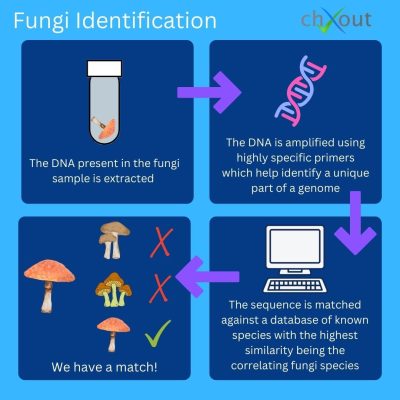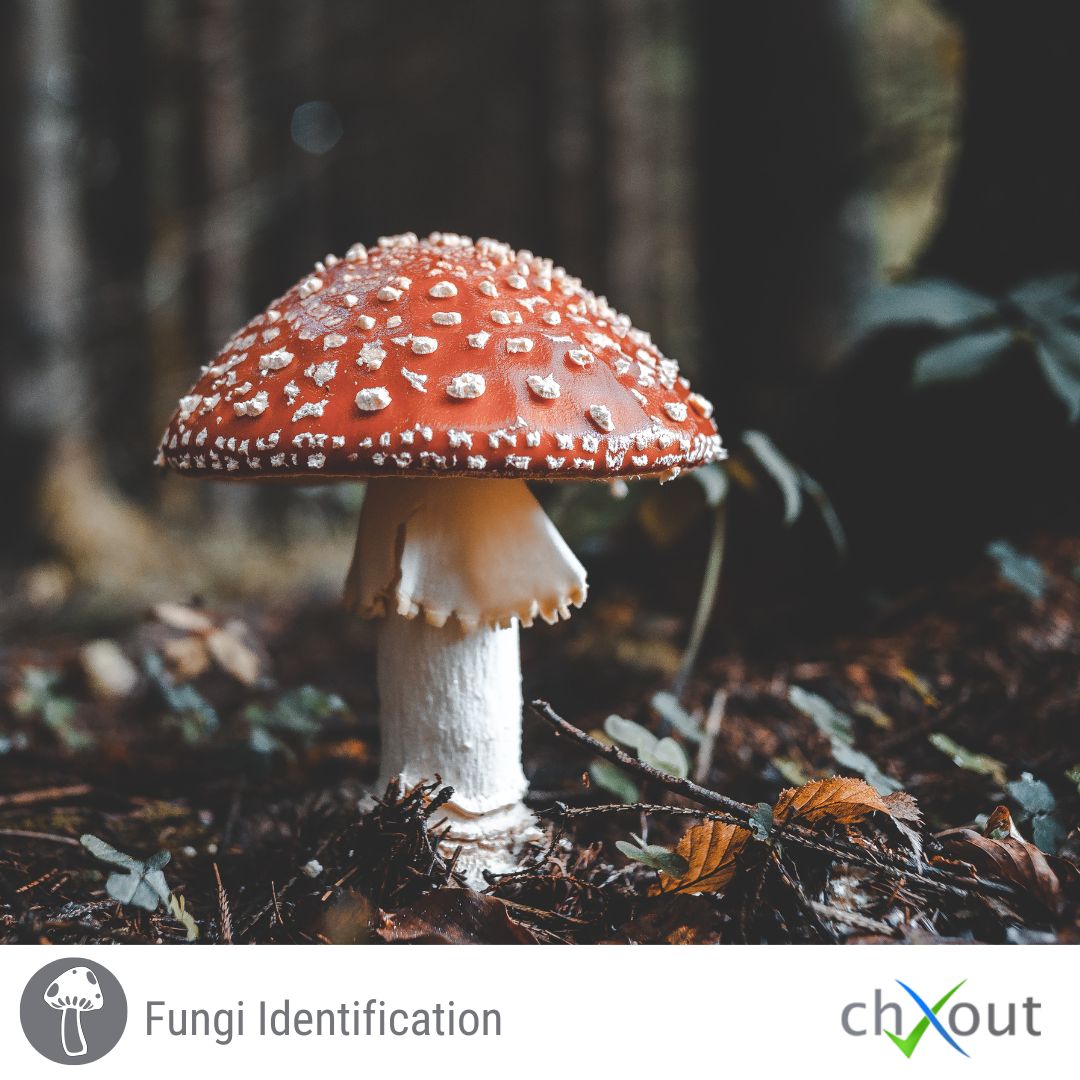New Client?
We would appreciate if you could complete and new client form to send to us via email or alongside your first set of samples please.
Why is fungi identification important?
Fungi are one the largest and most diverse groups of organisms in the world. As we have the plant and animal kingdoms, fungi make up a kingdom of their own. From just taking a look at them, you would probably assume that fungi and plants are very similar, when in fact fungi are actually biologically closer to animals.
Fungi are responsible for important environmental processes such as nutrient cycling and plant, animal and soil health. Humans also rely on fungi in food production, including items such as cheese, bread and chocolate and the manufacture of drugs and biofuels. Not forgetting that there is a huge market for edible mushrooms all over the world.

Mycology
Mycology is the study of fungi. For something that is so important to ecosystems and biodiversity, fungi are under-studied when compared with animals and plants. There are estimated to be at least six times as many species of fungi than plants, anywhere between 2 and 11 million! Approximately only 150,000 of these have been officially described or recognised.
Identification
The criteria used by taxonomists to describe fungal species can make it very difficult to describe, identify and compare across the many different groups. More recently, fungi identification has advanced with the help of DNA barcoding.
Fungal profiling is a complimentary tool, for the ever-curious individual. Whether a woodland find has left you floored, or a surprise guest is feasting on your flowers, our citizen science service returns fast and reliable results.
Fungi Identification Using DNA Sequencing
We utilise the Internal Transcribed Spacer (ITS) region, a universal fungal gene hosting a multitude of variation. Through targeting the ITS regions 1 and 4, a genetic profile is created for analysis.
The sequence or barcode is compared against the National Centre for Biotechnology Information (NCBI) GenBank database of known species.

In special cases where the ITS alone doesn’t provide enough insight, secondary genomic sites can also be studied, ensuring accurate identification, right down to the species level.
Sample requirements for fungi identification
A small piece of fungi is required to carry out the analysis. We recommend a minimum sample size of around 20 x 20mm or approximately 100mg (multiple smaller pieces are also acceptable, providing they are all from the same specimen) so that we have a reasonable quantity in case the process needs to be repeated.
Place the sample in a paper envelope wrapped in paper padding for protection (for example, kitchen roll or equivalent). Any form of unused paper or cardboard packaging is suitable as long as your sample is secure. If you have multiple samples to identify, please ensure they are packaged individually inside the main postage envelope and labelled clearly.
Please do not use plastic containers or zip seal bags to send us your sample as this can cause fungi to sweat and mould to grow.
For more information about sample submission, please see our fungi sampling instructions document at the top of this page.
Responsible fungi study and sample collection
When collecting fungi samples please ensure that you are following the Countryside Code, making sure that you always seek landowner permission, avoid causing any damage or disturbance to the location or other organisms and leave the area as close as possible to the state in which it was found.
Please do not collect more than is necessary. Fungi species are an important part of the ecosystem and can be extremely rare, including four species protected by schedule 8 of the Wildlife and Countryside Act 1981. We also recommend reading the British Mycological Society (BMS) Code of Conduct prior to collecting any samples.
Turnaround Time & Pricing
4 working day turnaround
£30.00 per sample (including VAT)
Please Note
Please note that results should be used in combination with taxonomic studies of fungi. Results are for research purposes only and should not be interpreted as confirmation that a fungus is safe to be eaten at any time.
In some instances, a different DNA analysis may be required to give the best result. If you have a suspicion of species ID at time of submission, please let us know and we may decide to target a different region. There is no extra cost for this as we are just substituting one reaction for another.
If however, we get an inconclusive result, and a second test is recommended, then unfortunately a new order will be required. This will be rare of course, our first line ITS1-ITS4 test should cover most eventualities.
What do I need to do?
- Collect your sample as per the sample requirements section above.
- Ensure that your samples are sealed securely and labelled correctly.
- Complete the relevant forms for your service. If you could please email them to sales@chxout.com we will know to expect your sample(s) & it will help us to manage caseloads in busy periods. Please note you may need to download a free PDF reader rather than a PDF viewer to complete the form.
- Don’t forget to send over any photographs of the specimen if you would like them to be included in the report. Please ensure that these are carefully labelled with your chosen sample ID for accuracy.
- Package your samples safely (a jiffy bag is recommended to avoid crushing as much as possible) and include your client reference. Please enclose your sample submission form if it has not already been emailed to us.
- Send your samples to us at: chXout®, The Durham Genome Centre, Park House, Station Road, Lanchester, DH7 0EX
- Your sample(s) will be checked and logged in upon receipt ready to be passed to the laboratory.
- A report will be emailed to you attached as a PDF document within the turnaround time.
Fungi Identification FAQ's
Please do not use plastic containers or Ziploc bags to send us your sample as this can cause fungi to sweat and mould to grow.
The sample submission form at the top of the page can be downloaded and emailed to us or printed and included with your samples. You will also find a sample submission instructions document which can be downloaded for further information.
Please be mindful you are still collecting the minimal quantity required based on the amount of fungi found. Please see British Mycological Society code of conduct when collecting fungal sample.
Please email your photos to sales@chxout.com alongside your sample submission form.

